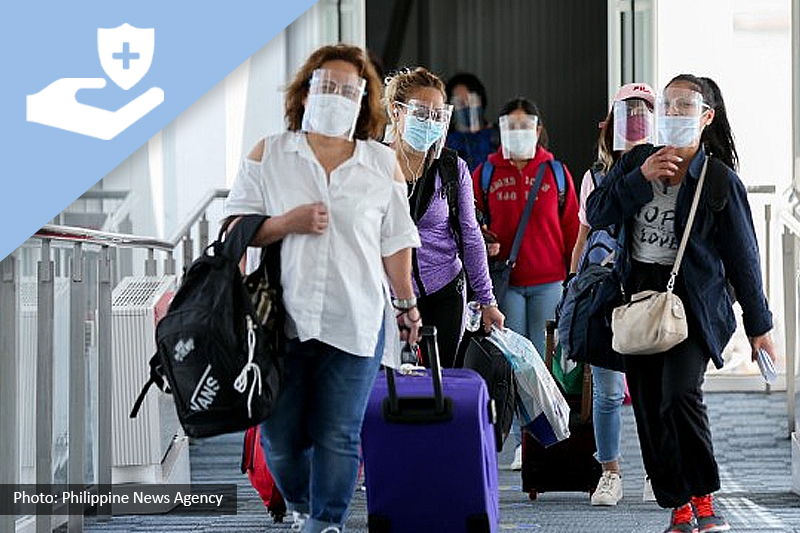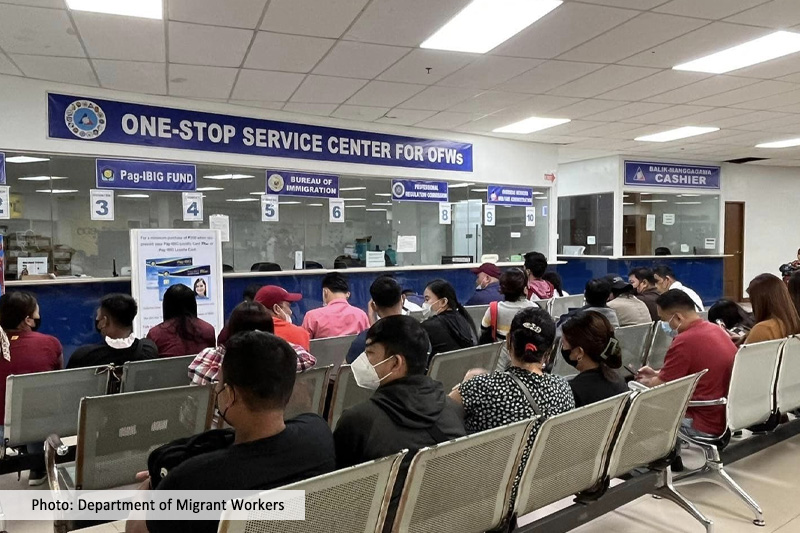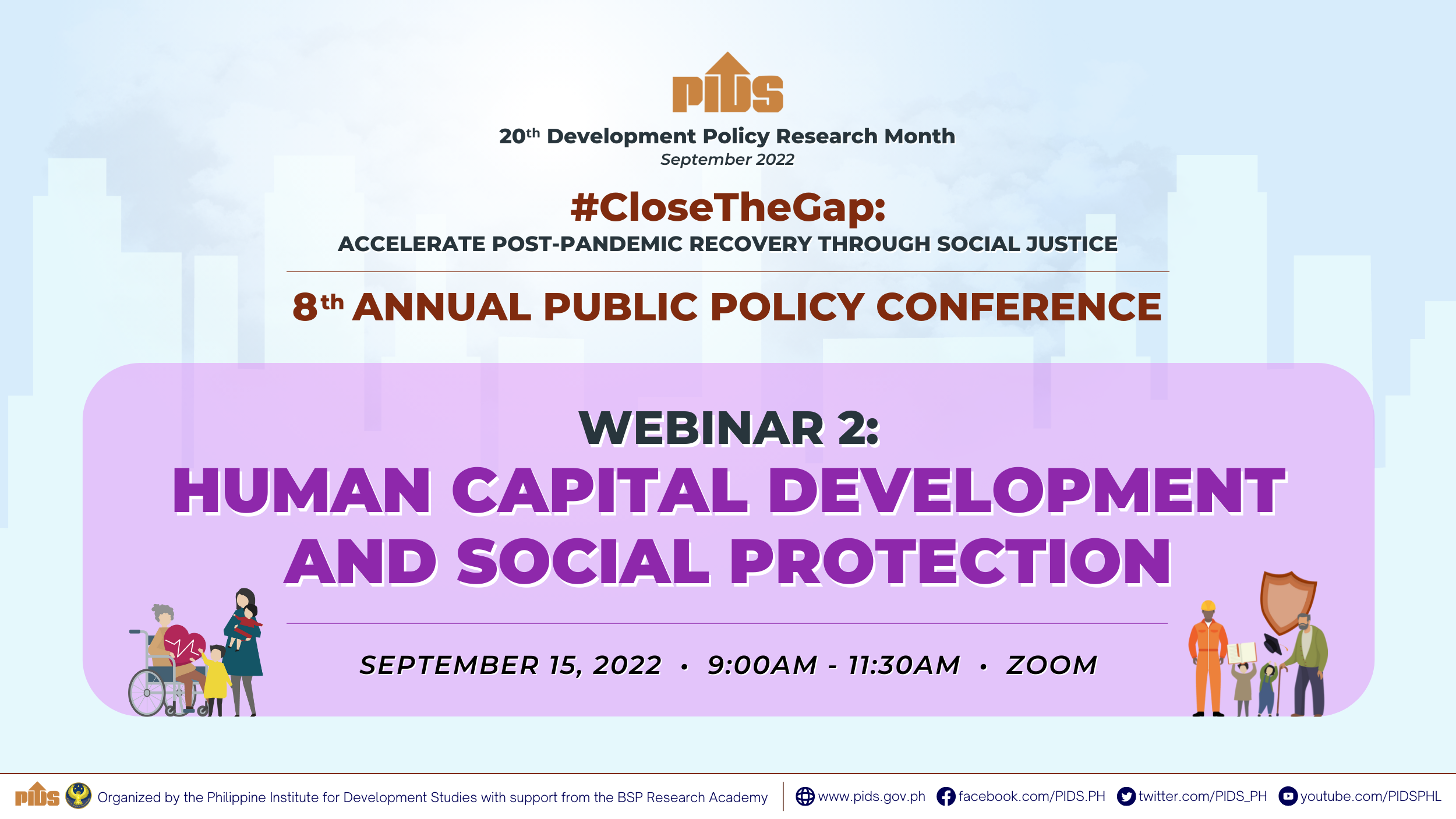
A significant proportion of Filipino migrant workers can be categorized as ‘potentially vulnerable’ due to lack of access to social protection.
This was highlighted in a recent study of state think tank Philippine Institute for Development Studies (PIDS) authored by PIDS Research Fellow Aubrey D. Tabuga, PIDS Research Analyst Anna Rita P. Vargas, and PIDS Senior Research Specialist Maria Blesila D. Mondez.
Analyzing the 2018 National Migration Survey, the authors found that in the first migration experience of overseas Filipino workers (OFWs), they mostly received benefits that meet their immediate on-site needs rather than those considered safety nets or buffers. The latter, the authors pointed out, would have allowed them to smoothen consumption in times of shocks.
Moreover, only 53 percent of migrant workers had health insurance or medical allowance benefits. According to the authors, this could be attributed to the low level of education among many migrant workers.
Those working in elementary occupation, as well as in the agriculture, forestry, and fishery sector, were “observed to be more vulnerable” as close to a third of them “are both without health and social insurance”.
Income was positively correlated with access to health and social insurance, with those from the lowest income decile lacking health and social insurance.
“Of those from the bottom quintile, 70 percent did not have health insurance, [while] only 22 percent of those from the highest quintile did not have such membership,” the authors explained, adding that the same is true for social insurance.
The study also noted that while migration agencies, such as the Philippine Overseas Employment Administration and the Overseas Workers Welfare Administration, require OFWs to enroll in mandatory health and social insurance programs, most of them are still nonmembers.
Given the study’s findings, the authors emphasized the importance of targeting the less educated migrant workers and those who hold elementary occupations in awareness and education campaigns on social protection.
They also urged the government agencies mandated to promote the welfare of migrant workers to carry out more aggressive steps toward the inclusion of OFWs in social insurance. For one, they can assess the current mechanisms used in securing the Overseas Employment Certificate (OEC) regarding its inability to promote access to social insurance.
“The online platforms for OEC processing may have resulted in a more efficient process of securing the document but may have reduced the opportunity for enrolling OFWs in social protection schemes,” the authors pointed out.
The study also underscored the importance of education programs related to financial literacy in increasing the willingness and commitment of migrant workers to regularly contribute to insurance schemes for their own protection. ###
This press release is based on the PIDS discussion paper titled “Analyzing Filipino Migrant Workers’ Access to Social Protection”.
This was highlighted in a recent study of state think tank Philippine Institute for Development Studies (PIDS) authored by PIDS Research Fellow Aubrey D. Tabuga, PIDS Research Analyst Anna Rita P. Vargas, and PIDS Senior Research Specialist Maria Blesila D. Mondez.
Analyzing the 2018 National Migration Survey, the authors found that in the first migration experience of overseas Filipino workers (OFWs), they mostly received benefits that meet their immediate on-site needs rather than those considered safety nets or buffers. The latter, the authors pointed out, would have allowed them to smoothen consumption in times of shocks.
Moreover, only 53 percent of migrant workers had health insurance or medical allowance benefits. According to the authors, this could be attributed to the low level of education among many migrant workers.
Those working in elementary occupation, as well as in the agriculture, forestry, and fishery sector, were “observed to be more vulnerable” as close to a third of them “are both without health and social insurance”.
Income was positively correlated with access to health and social insurance, with those from the lowest income decile lacking health and social insurance.
“Of those from the bottom quintile, 70 percent did not have health insurance, [while] only 22 percent of those from the highest quintile did not have such membership,” the authors explained, adding that the same is true for social insurance.
The study also noted that while migration agencies, such as the Philippine Overseas Employment Administration and the Overseas Workers Welfare Administration, require OFWs to enroll in mandatory health and social insurance programs, most of them are still nonmembers.
Given the study’s findings, the authors emphasized the importance of targeting the less educated migrant workers and those who hold elementary occupations in awareness and education campaigns on social protection.
They also urged the government agencies mandated to promote the welfare of migrant workers to carry out more aggressive steps toward the inclusion of OFWs in social insurance. For one, they can assess the current mechanisms used in securing the Overseas Employment Certificate (OEC) regarding its inability to promote access to social insurance.
“The online platforms for OEC processing may have resulted in a more efficient process of securing the document but may have reduced the opportunity for enrolling OFWs in social protection schemes,” the authors pointed out.
The study also underscored the importance of education programs related to financial literacy in increasing the willingness and commitment of migrant workers to regularly contribute to insurance schemes for their own protection. ###
This press release is based on the PIDS discussion paper titled “Analyzing Filipino Migrant Workers’ Access to Social Protection”.












